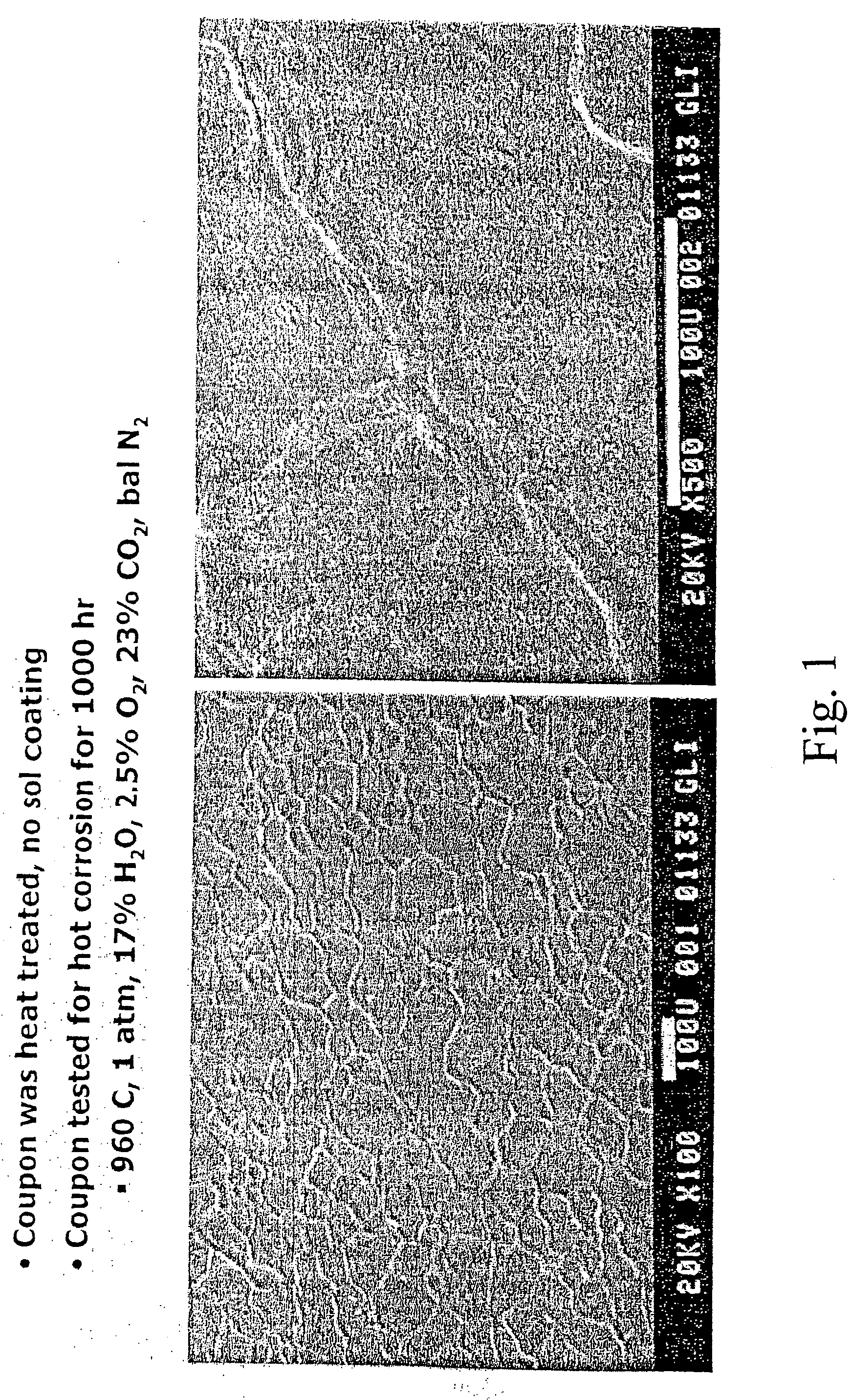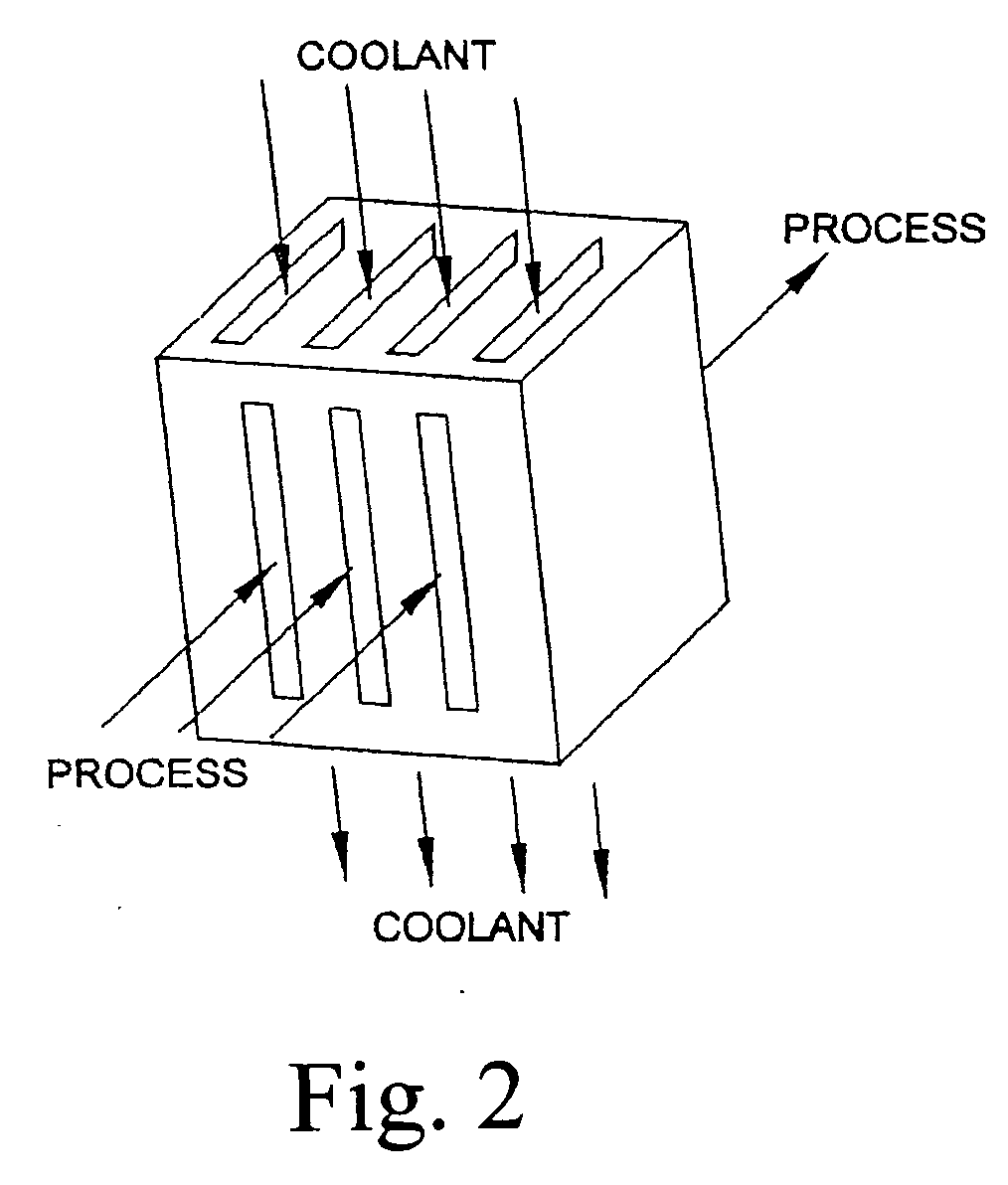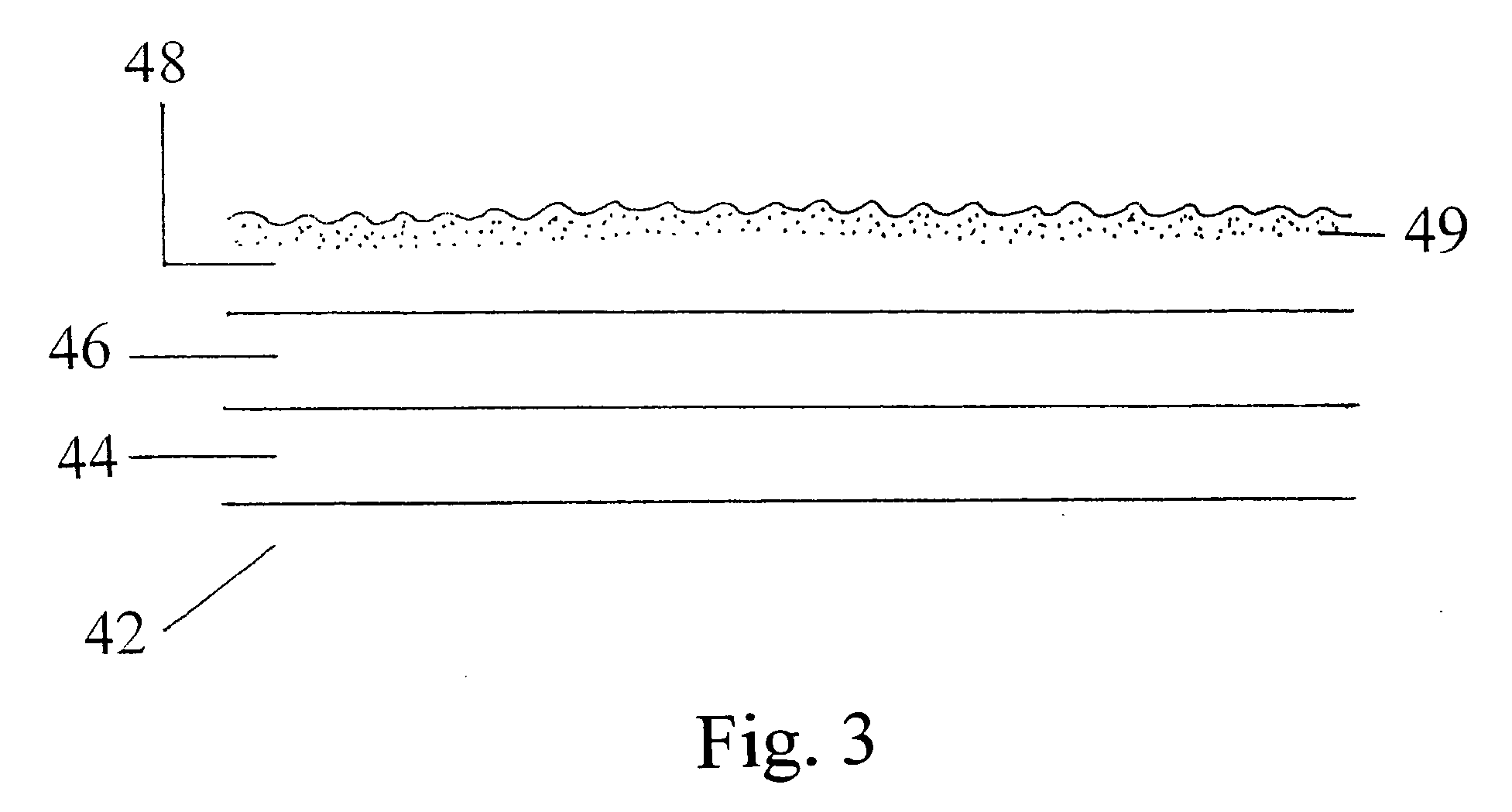Catalysts having catalytic material applied directly to thermally-grown alumina and catalytic methods using same, improved methods of oxidative dehydrogenation
a technology of catalytic materials and thermally grown alumina, which is applied in the direction of catalyst activation/preparation, metal/metal-oxide/metal-hydroxide catalysts, and chemical production of bulk chemicals, etc., can solve the problems of high endothermic thermal cracking process for olefin production, complex cracking furnaces, and large construction and maintenance costs. , to achieve the effect of excellent adhesion and excellent activity
- Summary
- Abstract
- Description
- Claims
- Application Information
AI Technical Summary
Benefits of technology
Problems solved by technology
Method used
Image
Examples
examples
Direct Coating Methodology:
[0117] On a heat treated aluminidized alloy 617 coupon, aqueous metal solution used as precursors was directly applied at room temperature. For the Pt system, 9% (atomic Pt) of tetraammineplatinum hydroxide solution was used. After each coating, the coupon was calcined at 450° C. for 1 hr in air. Once the desired weight gain was achieved, the coupon was calcined at 850° C. for 4 hrs in air for the final calcination. For a Re—Pt system, perrhenic acid or ammonium perrhenate can be used and was coated first before Pt was applied.
Corrosion Protection
[0118] Samples of Inconel™ 617 were corrosion tested with and without a protective aluminide coating. The aluminide coated sample was made by forming a layer of aluminide and heating under H2 atmosphere and then exposing to air at 1050° C. Both samples were corrosion tested at 960° C. and 17% water, 2.5% O2 for 1000 hours. The uncoated sample showed pitting after 100 hours of testing. In contrast, the alumini...
PUM
| Property | Measurement | Unit |
|---|---|---|
| size | aaaaa | aaaaa |
| thick | aaaaa | aaaaa |
| thickness | aaaaa | aaaaa |
Abstract
Description
Claims
Application Information
 Login to View More
Login to View More - R&D
- Intellectual Property
- Life Sciences
- Materials
- Tech Scout
- Unparalleled Data Quality
- Higher Quality Content
- 60% Fewer Hallucinations
Browse by: Latest US Patents, China's latest patents, Technical Efficacy Thesaurus, Application Domain, Technology Topic, Popular Technical Reports.
© 2025 PatSnap. All rights reserved.Legal|Privacy policy|Modern Slavery Act Transparency Statement|Sitemap|About US| Contact US: help@patsnap.com



